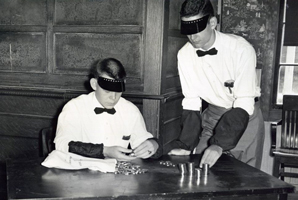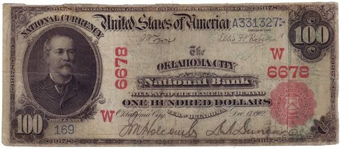Economic Concepts

Bank Tellers from the Liberty Bank and Trust Co.
1957. Image Courtesy of the Oklahoma Historical Society Research Division
Banking
A bank is a company that makes financial transactions. The government grants “charters” to banks. A charter is a document that authorizes a company to exist. Banks are not legal without a charter. Banks take deposits from customers, and use that money to fund investments such as home and business loans, and stocks. They promise to maintain the value of the customer’s deposit, and they offer a percentage of the profit they make from their investments. This is how savings accounts have an interest rate.
A banking panic is a special crisis that can cause a bank to fail. A bank fails if it does not have enough money to pay all of its deposits and debts. This can happen for many reasons, similar to a stock market crash. Since the Great Depression of the 1930s, the Federal Deposit Insurance Corporation, or FDIC, has insured deposits in banks. This means that even if the bank fails, the depositor’s money is safe. Before the Federal Reserve System existed, bank failures were common. One of the goals of the Federal Reserve is to provide stability for banks and the people of the United States. It helps to do this by inspecting banks to make sure they are not close to failing, although sometimes banks can fail no matter how hard everyone works to try to help it.

This is a 1902 territorial bill from the Oklahoma City National Bank. Image courtesy of antiquemoney.com
Currency
A currency is an object or group of objects used in the exchange of goods and services. In the United States of America, there is currency in the form of paper bills and metal coins. These bills and coins represent value that is given to another for something in return, like paying $1.25 for a bottle of soda. Currency was exchanged for an object that had value.
American Currency has had many shapes, sizes, and even different values. The United States used to have a “Hard Currency.” This meant that the paper bills used in exchanges had a specific value in precious metals, such as gold or silver. Now, the United States uses a “soft,” or “fiat” currency. This means that the government of the United States alone backs the value of the U.S. dollar. People’s belief in the United States government affects the value of its currency. All of the most used currencies in the world today are fiat currencies.

